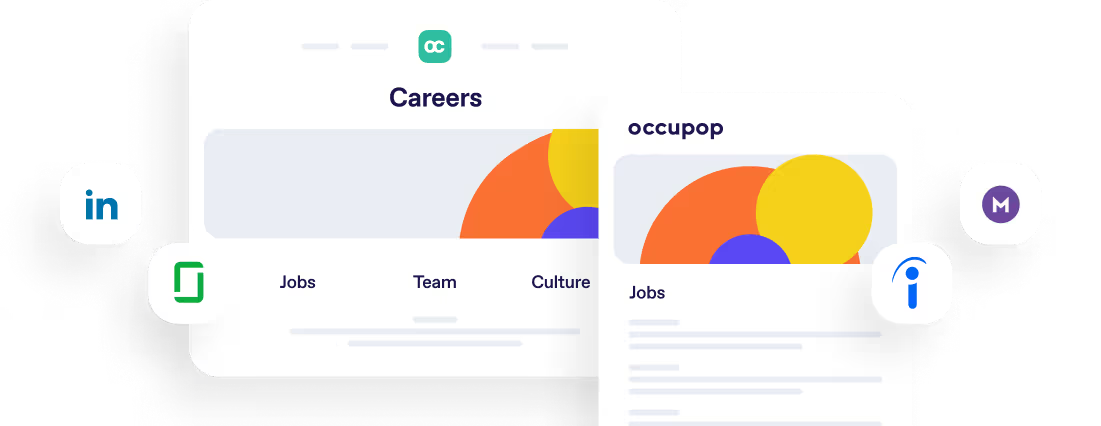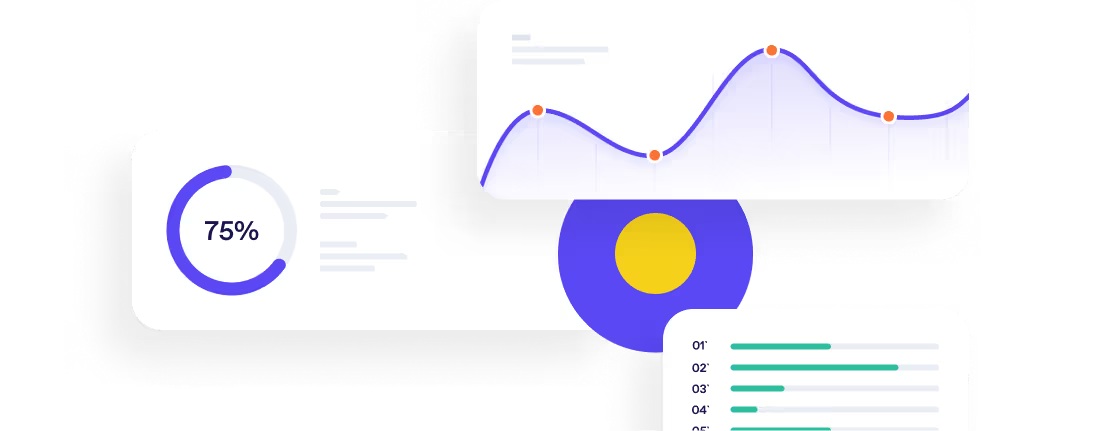The Benefits of Using Recruitment Software



In this article, we will explore the various advantages that come with embracing this technology and understand why it has become a game-changer in the world of recruiting.
Understanding Recruitment Software
Before we delve into the benefits, let's take a moment to understand what recruitment software actually is. In simple terms, recruitment software refers to a set of tools and platforms that automate and streamline the hiring process. From posting job openings to screening candidates and scheduling interviews, this software simplifies the entire recruitment lifecycle, saving HR professionals time and effort.
Recruitment software, also known as applicant tracking systems (ATS), is designed to centralise and streamline the hiring process. It enables HR professionals to manage job postings, track applications, review resumes, and communicate with candidates all in one place. With intuitive interfaces and a range of features, modern recruitment software has transformed how organisations find and hire the best talent.
Now, let's explore some of the key features of recruitment software.

Automated Job Posting and Syndication
One of the key features of recruitment software is its ability to automate job postings and syndicate them to various job boards and social media platforms. This saves HR professionals the time and effort of manually posting job openings on multiple platforms. With just a few clicks, recruiters can ensure that their job openings reach a wider audience, increasing the chances of attracting top talent.
Resume Parsing and Candidate Screening
Another important feature of recruitment software is resume parsing and candidate screening. This functionality allows the software to automatically extract relevant information from resumes and assess the suitability of candidates based on predefined criteria. By eliminating the need for manual screening, recruitment software enables HR professionals to focus their time and energy on evaluating the most qualified applicants.
Collaborative Hiring Tools
Recruitment software also offers collaborative hiring tools that streamline the interview and selection process. These tools allow multiple stakeholders, such as hiring managers and team members, to collaborate and provide feedback on candidates. By centralising communication and feedback, recruitment software ensures a more efficient and transparent hiring process.
INSERT-cta
Integration with Other HR Systems
Recruitment software can be seamlessly integrated with other HR systems, such as payroll and employee management software. This integration allows for seamless data management and eliminates the need for manual data entry and duplication. By maintaining a centralised database of candidate information, HR professionals can easily access and retrieve data whenever needed.
Analytics and Reporting Capabilities
Modern recruitment software also comes with analytics and reporting capabilities that enable HR professionals to track hiring metrics and improve decision-making. These features provide valuable insights into the effectiveness of recruitment strategies, allowing organisations to make data-driven decisions and optimise their hiring processes.
In conclusion, recruitment software has revolutionised the way organisations find and hire talent. With its automation, centralisation, and range of features, recruitment software simplifies the hiring process, saving HR professionals time and effort. Whether it's automated job posting, resume parsing, collaborative hiring tools, integration with other HR systems, or analytics and reporting capabilities, recruitment software offers a comprehensive solution for efficient and effective talent acquisition.
The Role of Recruitment Software in Modern HR
Recruitment software plays a crucial role in modern HR departments, enabling them to become more efficient and effective in their hiring processes. Let's explore two key ways in which recruitment software revolutionises the recruitment landscape.

Streamlining the Recruitment Process
One of the most significant advantages of using recruitment software is the ability to streamline the entire recruitment process. With automated job posting and resume parsing, HR professionals can save hours of manual work and focus on more strategic aspects of the hiring process. This streamlining of tasks leads to faster time-to-hire and ensures that top talent doesn't slip through the cracks.
Recruitment software not only automates job posting on various platforms but also optimises the job descriptions to attract a wider pool of candidates. It uses advanced algorithms to identify the most relevant keywords and phrases that resonate with potential applicants. This optimisation ensures that job postings reach the right candidates, increasing the chances of finding the perfect match for the position.
Furthermore, recruitment software simplifies the resume screening process by automatically parsing and analysing resumes. It scans for specific skills, qualifications, and experience, allowing HR professionals to quickly identify the most suitable candidates. This automated screening process eliminates the need for manual evaluation, saving valuable time and effort.
In addition to resume parsing, recruitment software also offers features such as candidate scoring and ranking. These features use data-driven algorithms to evaluate and compare candidates based on various criteria, such as qualifications, experience, and cultural fit. This automated ranking system enables HR professionals to prioritise candidates and focus their attention on those who are the best fit for the organisation.
Enhancing Communication with Candidates
Poor communication during the hiring process can result in a negative candidate experience and potentially deter top talent from joining your organisation. Recruitment software bridges this communication gap by providing a seamless platform for HR professionals to engage with candidates. Automated emails, interview scheduling capabilities, and progress tracking all contribute to a smoother and more engaging candidate experience.

Recruitment software automates the entire communication process, ensuring that candidates receive timely updates and personalised messages. Automated emails can be sent to acknowledge receipt of applications, provide updates on the status of their application, and even send rejection notifications. This proactive communication keeps candidates informed and engaged throughout the hiring process, enhancing their overall experience.
Moreover, recruitment software simplifies the interview scheduling process by offering self-service interview scheduling tools. Candidates can choose from available time slots, eliminating the back-and-forth communication between HR professionals and candidates. This self-service feature not only saves time but also empowers candidates by giving them control over their interview schedule.
Additionally, recruitment software provides HR professionals with a centralised platform to track and manage candidate progress. They can easily view the stage at which each candidate is in the hiring process, review interview feedback, and collaborate with hiring managers. This transparency and collaboration streamline the decision-making process and ensure that all stakeholders are on the same page.
In conclusion, recruitment software has revolutionised the recruitment landscape by streamlining the hiring process and enhancing communication with candidates. Its automation capabilities save time, improve efficiency, and provide a better candidate experience. As technology continues to advance, recruitment software will continue to play a vital role in modern HR departments, helping them attract, evaluate, and hire top talent.
Key Benefits of Using Recruitment Software
Now that we understand the role of recruitment software, let's dive into the key benefits it offers to organisations looking to improve their hiring processes.
Increased Efficiency in Hiring
Recruitment software eliminates tedious manual processes, such as manually tracking applicants and shuffling through countless resumes. By automating these tasks, HR professionals can spend more time on strategic initiatives, such as building relationships with candidates and developing effective talent acquisition strategies. This increased efficiency in hiring improves overall productivity and saves valuable time and effort.
Improved Quality of Hire
Effective recruitment software goes beyond automating administrative tasks; it also helps organisations identify and attract high-quality candidates. With features like resume parsing and candidate screening, recruitment software enables HR professionals to filter through large applicant pools more accurately. By focusing on the most qualified candidates, organisations can improve the quality of their hires and, consequently, the performance of their teams.

Cost-Effective Recruitment
Traditional recruitment methods can be expensive, with costs associated with job board postings, advertisements, and agency fees. By using recruitment software, organisations can reduce these costs significantly. Automating the hiring process saves money on administrative tasks and eliminates the need for manual paperwork. Additionally, recruitment software helps organisations avoid costly hiring mistakes by improving the quality of their hires.
Case Studies: Success Stories of Recruitment Software in SMBs
To truly understand the impact of recruitment software, let's take a look at some real-life success stories from small to mid sized companies.

BBF Limited Transformational Reduction in Recruitment Costs with Recruitment Software
BBF Limited, a food manufacturing company, struggled with managing a high volume of applications for their rapidly growing team. After implementing Occupop recruitment software, they experienced a significant £350,000 reduction in their annual recruitment costs when compared to the time before the implemented the ATS. Time-to-hire dropped by 11 days and they successfully hired top talent faster than ever before. The streamlined process allowed their HR team to focus on building relationships with top candidates, improving overall candidate experience, and creating an exceptional workforce. Read the full case study here.
How PrepayPower Improved Their Collaborative Hiring Process
PrepayPower a multinational corporation based in Ireland and the UK, faced challenges in coordinating interviews across different locations and departments. This was pronounced with covid-19 hit. By leveraging Occupop recruitment software with collaborative hiring tools, they were able to schedule interviews seamlessly. Communication improved, resulting in quicker decision-making and reduced time-to-fill positions. The ATS software allowed them to centralise candidate information and streamline feedback from interviewers, ultimately enhancing the candidate experience and improving the quality of their hires. Read the full case study here.
Choosing the Right Recruitment Software
With the growing number of recruitment software options in the market, choosing the right one for your organisation can be overwhelming. Consider the following factors to make an informed decision:
Factors to Consider
- Size and complexity of your hiring needs
- User-friendliness and ease of implementation
- Integration capabilities with your existing HR systems
- Candidate experience and engagement features
- Analytics and reporting capabilities for data-driven decision-making
In conclusion, the benefits of using recruitment software are undeniable. It streamlines the entire recruitment process, enhances communication with candidates, increases efficiency in hiring, improves the quality of hires, and reduces costs. By leveraging the right recruitment software, organisations can gain a competitive edge in finding and attracting top talent, ensuring long-term success and growth.
Looking to create a business case for an investment in recruitment software? Download the ATS business case template here to clearly convey budget holders the need for investment.
INSERT-LINE
About Occupop
Occupop is a beautifully simple recruitment software built for small and medium businesses. We empower our customers to become great at hiring through our smart hiring technology and suite of solutions that almost anyone can use. So whether you're a team of five or fifty, it only takes a few minutes to onboard your team members, set permissions, and start recruiting. If you think Occupop could be a good small business recruitment software solution for you, try it out today with a free 14-day trial.
Summary Points
The Benefits of Using Recruitment Software
- It automates and streamlines the hiring process.
- Applicant tracking systems (ATS) centralize recruitment tasks.
- Features include automated job posting and candidate screening.
- Collaboration tools streamline interviews and feedback.
- Integration with HR systems for seamless data management.
- Analytics enable data-driven decision-making.
- Improves efficiency, quality of hire, and candidate experience.
- Cost-effective and reduces time-to-hire.
Simple. Beautiful.
Recruitment Software.
HR updates sent straight to your inbox
You might also like...


Manage your entire hiring process simply, from engagement to management, hiring and onboarding







Simple. Beautiful.
Recruitment Software.
Recruitment Software.






